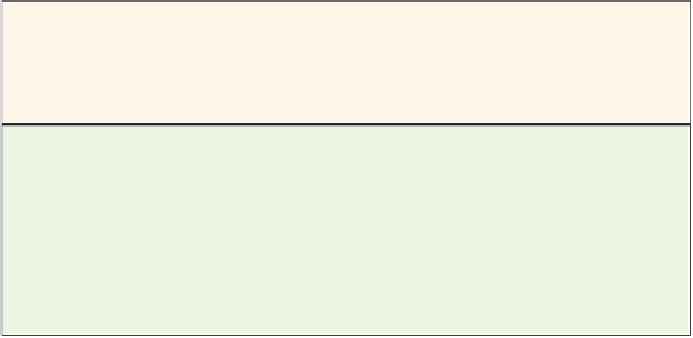Database Reference
In-Depth Information
adjusted as more forms and reports are analyzed. Periodically, users are asked for additional
information, such as that needed to assess minimum cardinality. Users also review and vali-
date the data model. During that review, prototypes evidencing data model constructs may
need to be constructed, as explained earlier.
To give you an idea of the iterative nature of data modeling, we will consider the develop-
ment of a simple data model for a university. As you read this example, strive to appreciate
how the model evolves as more and more requirements are analyzed.
For a more detailed version of this data modeling exercise, combined with an overview of
the systems analysis and design process, see Appendix B.
By ThE Way
One of the authors worked on a large data model for the U.S. Army's
logistical system. The model contained more than 500 different entity
types, and it took a team of seven people more than a year to develop, document, and
validate it. On some occasions, the analysis of a new requirement indicated that the
model had been conceived incorrectly, and days of work had to be redone. The most
difficult aspect of the project was managing complexity. Knowing which entities re-
lated to which; whether an entity had already been defined; and whether a new entity
was strong, weak, a supertype, or a subtype required a global understanding of the
model. Memory was of poor help because an entity created in July could be a subtype
of an entity created hundreds of entities earlier in February. To manage the model, the
team used many different administrative tools. Keep this example in mind as you read
through the development of the Highline University data model.
Suppose the administration at a hypothetical university named Highline University wants
to create a database to track colleges, departments, faculty, and students. To do this, a data
modeling team has collected a series of reports as part of its requirements determination. In
the next sections, we will analyze these reports to produce a data model.
The College Report
Figure 5-44 shows an example report from Highline University about one college within
the university, the College of Business. This example is one instance of this report; Highline
University has similar reports about other colleges, such as the College of Engineering and the
College of Social Sciences. The data modeling team needs to gather enough examples to form
a representative sample of all the college reports. Here assume that the report in Figure 5-44 is
representative.
Examining the report, we find data specific to the college—such as the name, dean,
telephone number, and campus address—and also facts about each department within the
Figure 5-44
Highline University Sample
College Report
College of Business
Mary B. Jefferson, Dean
Campus Address:
Business Building, Room 100
Phone: 232-1187
Department
Accounting
Finance
Info Systems
Management
Production
Chairperson
Jackson, Seymour P.
HeuTeng, Susan
Brammer, Nathaniel D.
Tuttle, Christine A.
Barnes, Jack T.
Phone
232-1841
232-1414
236-0011
236-9988
236-1184
Total Majors
318
211
247
184
212







Search WWH ::

Custom Search